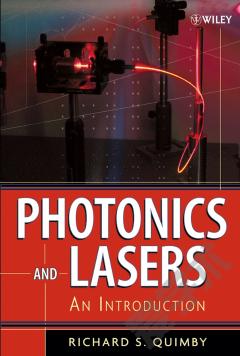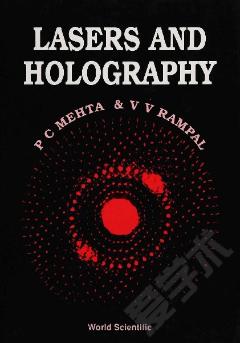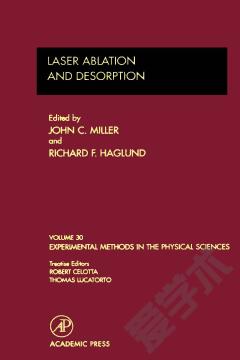Photonics and Lasers —— An Introduction
----- 光子学与激光:导论
Preface. PART I: PROPAGATION OF LIGHT. 1. Overview. 1-1 Photonics Defined. 1-2 Fiber Optic Communications. 1-3 Overview of Topics. 2. Review of Optics. 2-1 The Nature of Light. 2-2 Light at a Boundary. 2-3 Light Passing through. 2-4 Imaging Optics. 3. Planar Waveguides. 3-1 Waveguide Modes. 3-2 Mode Chart. 3-3 Dispersion. 4. Cylindrical Waveguides. 4-1 Acceptance Angle and Numerical Aperture. 4-2 Cylindrical Waveguide. 5. Losses in Optical Fibers. 5-1 Absorption Loss. 5-2 Scattering. 5-3 Bending Losses. 6. Dispersion in Optical Fibers. 6-1 Graded Index Fiber. 6-2 Intramodal Dispersion. 7. Fiber Connections and Diagnostics. 7-1 Fiber Connections. 7-2 Losses in Fiber Connections. 7-3 Fiber Loss Diagnostics. 8. Photonic Crystal Optics. 8-1 1-D Photonic Crystals. 8-2 2-D Photonic Crystals. 8-3 3-D Photonic Crystals. 9. Nonlinear Optics. 9-1 Fundamental Mechanisms. 9-2 Frequency Conversion. 9-3 Nonlinear Refractive Index. 9-4 Electro-optic Effects. PART II: GENERATION AND DETECTTION OF LIGHT. 10. Review of Semiconductor Physics. 10-1 Uniform Semiconductors. 10-2 Layered Semiconductors. 11. Light Sources. 11-1 The LED. 11-2 The Laser Diode. 12. Light Source to Waveguide Coupling Efficiency. 12-1 Point Source. 12-2 Lambertian Source. 12-3 Laser Source. 13. Optical Detectors. 13-1 Thermal Detectors. 13-2 Photon Detectors. 13-3 Noise in Photon Detectors. Part 2 Generation and Detection of Light. 14. Photodiode Detectors . 14-1 Biasing the Photodiode. 14-2 Output Saturation. 14-3 Response Time. 14-4 Types of Photodiodes. 14-5 Signal-to-Noise Ratio. 14-6 Detector Circuits. PART 3: LASER LIGHT. 15. Lasers and Coherent Light. 15-1 Overview of Laser. 15-2 Optical Coherence. 16. Optical Resonators. 16-1 Mode Frequencies. 16-2 Mode Width. 16-3 Fabry-Perot Interferometer. 17. Gaussian Beam Optics. 17-1 Gaussian Beams in Free. 17-2 Gaussian Beams in a Laser. 17-3 Gaussian Beams Passing. 18. Stimulated Emission and Optical Gain. 18-1 Transition Rates. 18-2 Optical Gain. 19. Optical Amplifiers. 19-1 Gain Coefficient. 19-2 Total Gain of Amplifier. 20. Laser Oscillation. 20-1 Threshold Condition. 20-2 Above Lasing Threshold. 21. CW Laser Characteristics. 21-1 Mode Spectrum of Laser. 21-2 Controlling the Laser. 22. Pulsed Lasers. 22-1 Uncontrolled Pulsing. 22-2 Pulsed Pump. 22-3 Theory of Q-Switching. 22-4 Methods of Q-Switching. 22-5 Theory of Mode Locking. 22-6 Methods of Mode Locking. 23 Survey of Laser Types. PART 4: LIGHT-BASED COMMUNICATIONS. 23-1 Optically Pumped Lasers. 23-2 Electrically Pumped Lasers. 24 Optical Communications. 24-1 Fiber Optic CommunicationsSystems. 24-2 Signal Multiplexing. 24-3 Power Budget in Fiber Optic. 24-4 Optical Amplifiers. 24-5 Free-Space Optics. Bibliography. Appendix A: Solid Angle and the Brightness Theorem. Appendix B: Fourier Synthesis and the Uncertainty Relation. List of Symbols. Index.
{{comment.content}}








 京公网安备 11010802027623号
京公网安备 11010802027623号